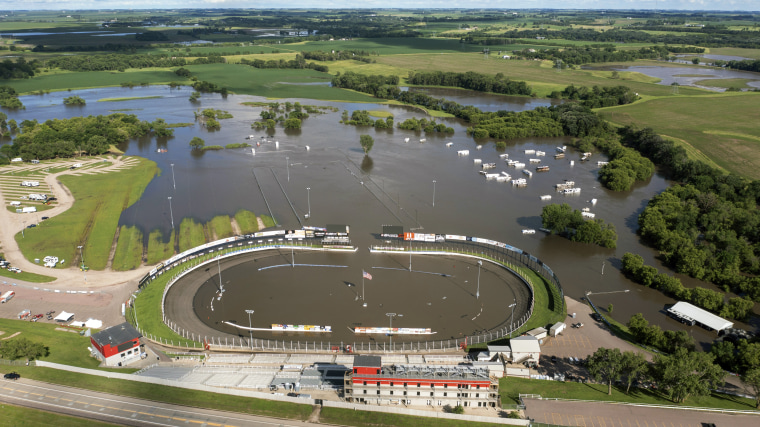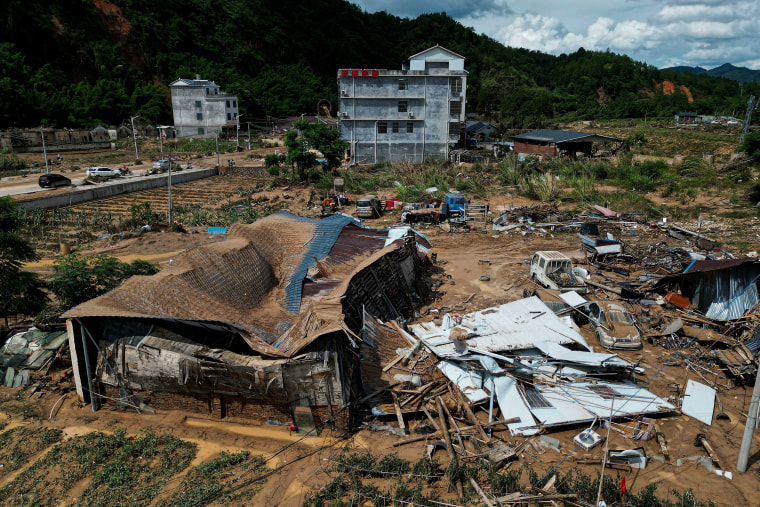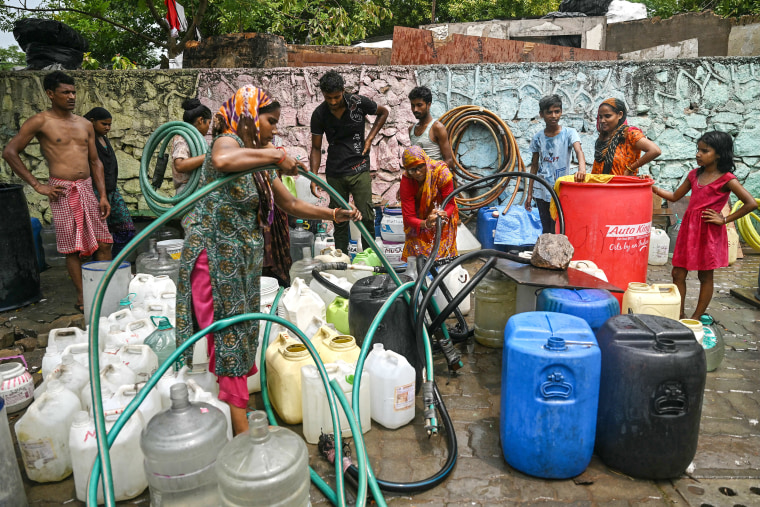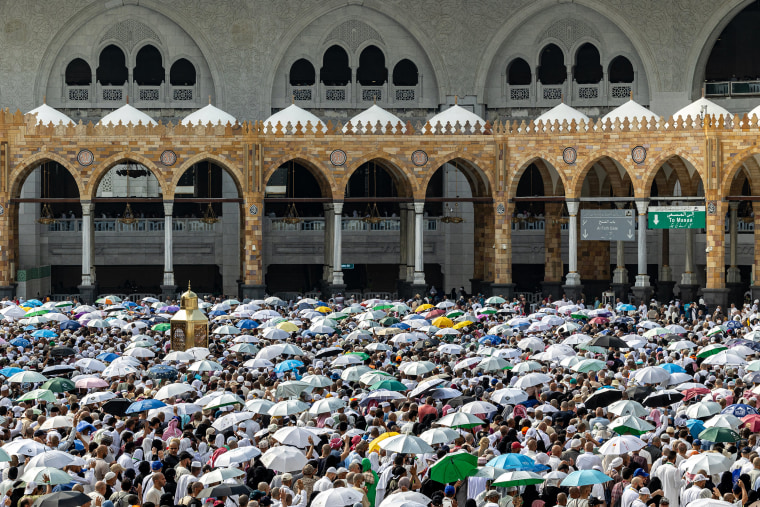The Summary
- In the last week alone, extreme weather has wreaked havoc in many parts of the U.S. and around the world.
- Climate change makes temperature extremes and intense downpours like those recently more likely.
- This year so far is the warmest on record, and ocean temperatures have set records for more than 15 months.
Summer is quickly becoming the season of grim extremes. In the last week alone, record heat across the Northeast shuttered schools and slowed some trains to a crawl, flooding in the Midwest caused a bridge to collapse and inundated towns across three states, and a tropical storm forced a disaster declaration for 51 Texas counties.
The specter of climate change lurks behind many of the recent events.
“Last year was, of course, the warmest year on record by a considerable margin. This year, to date, is now, again, the warmest on record for this point in June,” Daniel Swain, a climate scientist at UCLA and the National Center for Atmospheric Research, said at a briefing Monday.
It takes time for climate scientists to understand and calculate the role of global warming in individual weather events, but science shows clearly that the chances of temperature extremes are rising as the world warms. And because a warmer atmosphere can hold — and deliver — more moisture, the risk of intense downpours is likelier, too.
Because of that, the thumbprint of climate change is more recognizable in the summertime, Swain said.
“It’s not surprising we’re seeing another round of record-breaking heat and record-breaking precipitation. It is exhausting, but I think it’s really important not to put it out of sight and out of mind,” he said. “It usually raises its ugly head in the summer prominently because, of course, the summer in the Northern Hemisphere is the time of year when most people on Earth experience the hottest conditions.”
In Iowa, South Dakota and Minnesota over the weekend, extreme rainfall sent floodwaters roaring through communities in at least 80 counties and temporarily cut off the town of Spencer, Iowa — population 11,000 — from the rest of the state. Nearly 2,000 properties, including hundreds of homes, were damaged in Iowa alone.

In its Tuesday forecast, the National Weather Service said that “widespread moderate to major river flooding is ongoing” or expected across southeast South Dakota, southern Minnesota and northern Iowa into next week. Thursday and Friday were the wettest span in South Dakota’s recorded history, according to NWS records dating to 1893. River flooding took out a railroad bridge in the state and caused the partial collapse of the Rapidan Dam in southern Minnesota. Meanwhile, the brutal heat wave continues in the U.S. About 64 million people were under heat alerts Tuesday, with the National Weather Service predicting heat index values as high as 110 in some parts of the Southeast. (Heat index is a measure that combines air temperature with relative humidity.) Last week, a blast of heat in New England set daily records in Hartford, Connecticut, and Bangor and Portland, Maine, among other places. The heat-strained infrastructure in the Northeast caused travel delays for tens of thousands of commuters.

Scientists with ClimaMeter, a consortium that analyzes extreme events, found that temperatures in the Eastern U.S. were at about 3.5 degrees Fahrenheit hotter than in similar heat waves in the past, largely because of human-caused climate change. Meanwhile, temperatures in Las Vegas are trending more than 11 degrees above normal for the month of June, which is on pace to be the region’s hottest ever. The average temperature in Las Vegas has been 93 degrees.
The current heat wave followed one that primarily affected Mexico and Texas this month. More than 1,200 daytime high temperature records in the U.S. were broken from June 1 to 15. That heat wave was 35 times likelier because of climate change, according to a flash study from the World Weather Attribution Group. Texas also endured heavy rain and flooding along the Gulf Coast on Thursday as the first named storm of the season, Tropical Storm Alberto, approached and made landfall in Mexico. Forecasters say conditions are ripe for a banner Atlantic hurricane season. That’s because ocean waters are record hot, as they’ve been for more than a year. Daily sea surface temperatures have set records for more than 15 months, according to the University of Maine’s Climate Reanalyzer. The ocean heat, in combination with expected La Niña conditions, led the National Oceanographic and Atmospheric Administration to predict eight to 13 hurricanes and 17 to 25 named storms by late November, when the season ends.

Elsewhere in the world, downpours in southern China killed at least 47 people last week. Extreme rainfall touched off landslides, floods and mudslides in China’s Guangdong province. One town got more than 14 inches of rain. New Delhi has been roasting in extreme heat. In a monthslong heat wave that peaked in late May, India’s capital reported temperatures exceeding 120 degrees Fahrenheit, according to the India Meteorological Department. The city has experienced frequent power outages and is dealing with a severe shortage of drinking water.

In Saudi Arabia, more than 1,300 deaths were reported during the Hajj pilgrimage, which more than 1.8 million Muslims performed this year. Daily high temperatures at holy sites in Mecca reached 120 F as worshippers arrived. Some pilgrims fainted and collapsed. The heat waves have kept climate scientists busy as they seek to understand what’s driving those events.

“In the last few weeks, we have analyzed the Indian heat wave, the Saudi Arabian heat wave and now the Eastern U.S. heat wave,” said Davide Faranda, a researcher with the French National Centre for Scientific Research and a contributor to ClimaMeter. “In all cases, we find a strong effect of anthropogenic [human-caused] climate change exacerbating the event.” Climate experts say even the wealthiest countries, including the U.S., are struggling to adapt and protect people from extreme weather.
